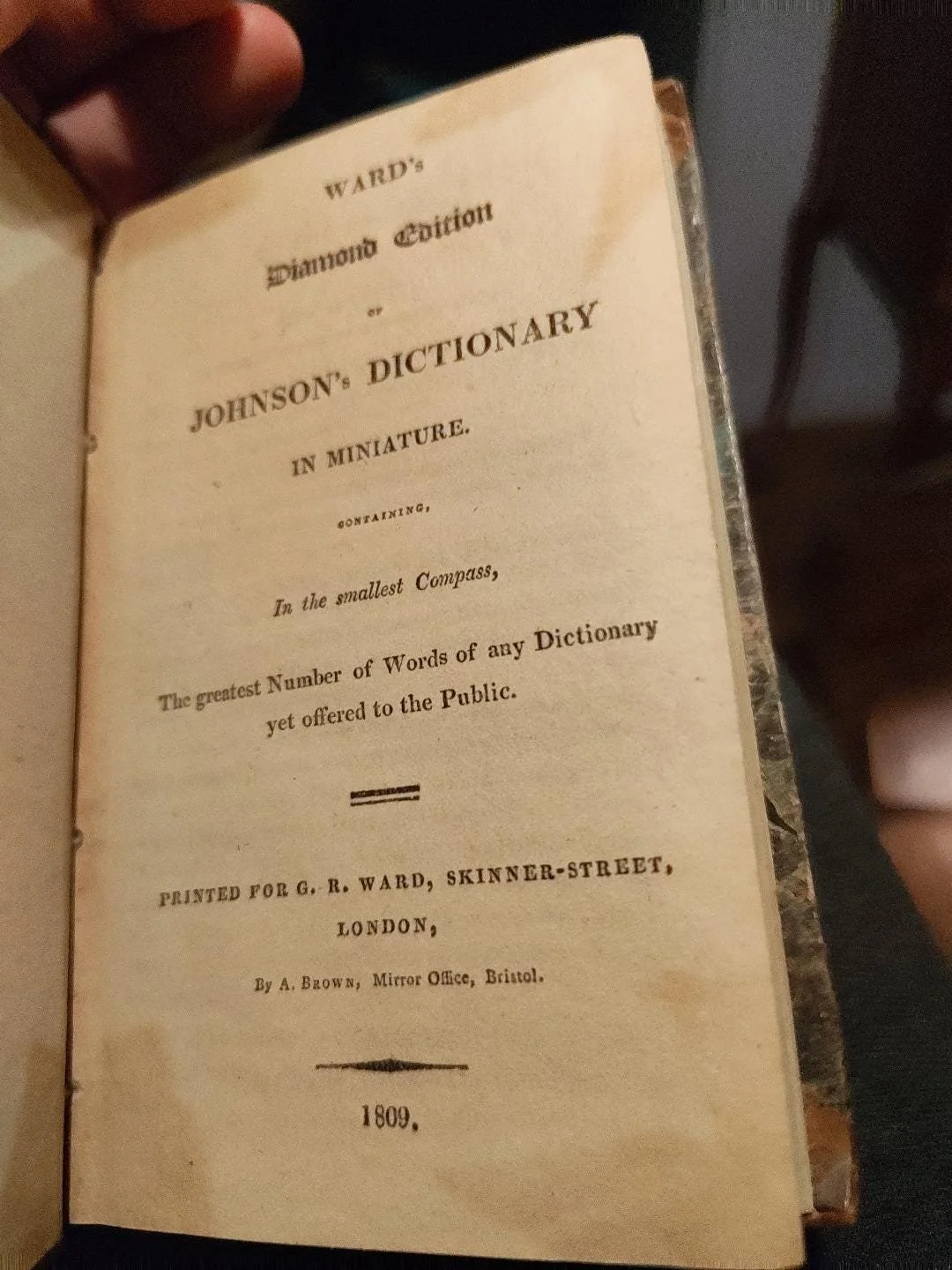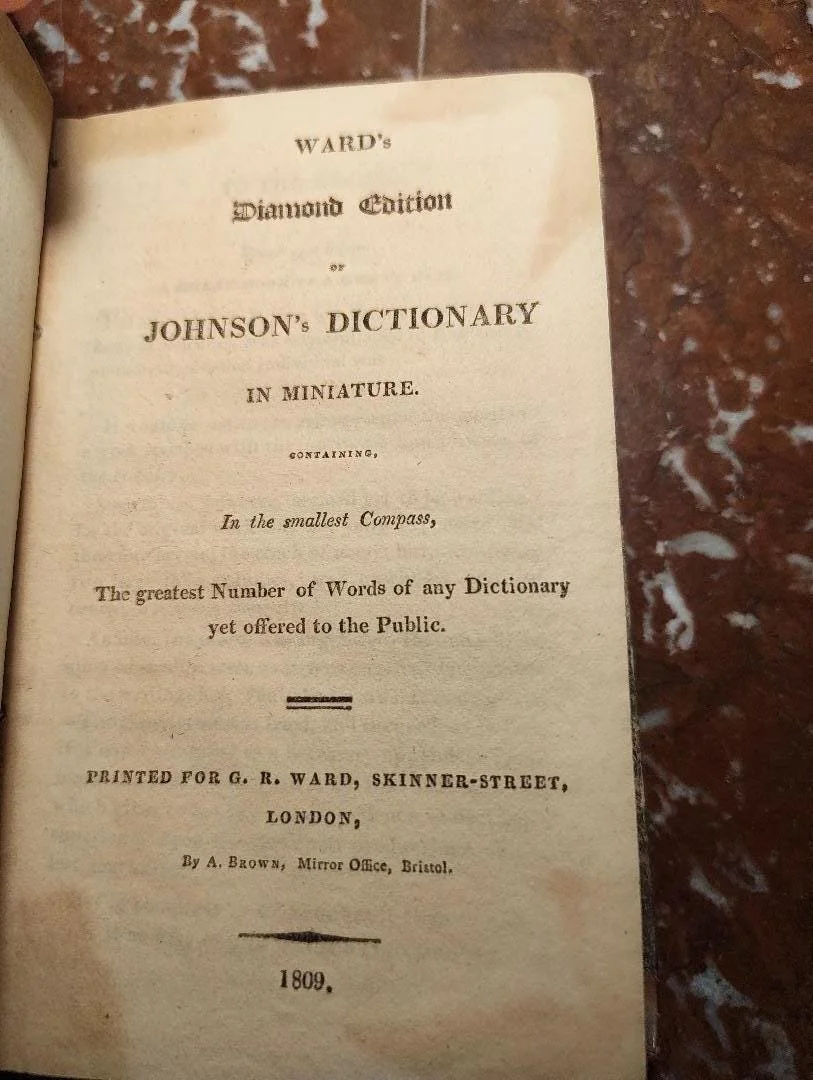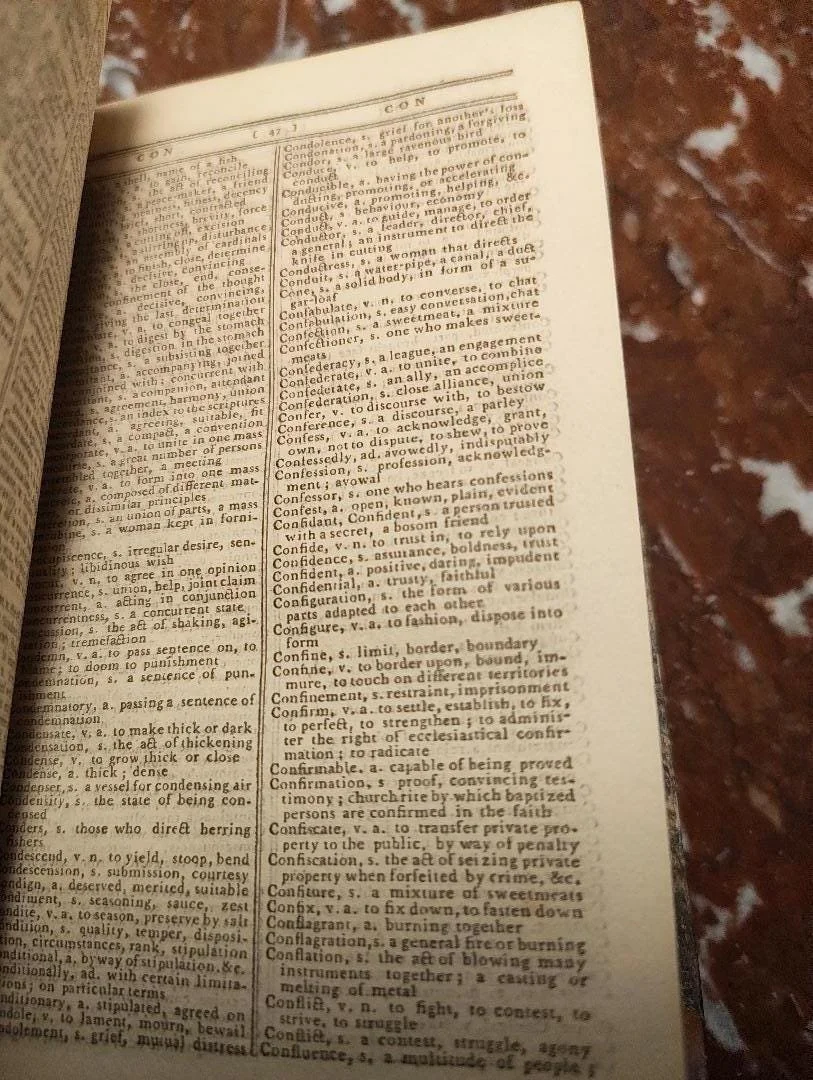 Image 1 of 9
Image 1 of 9

 Image 2 of 9
Image 2 of 9

 Image 3 of 9
Image 3 of 9

 Image 4 of 9
Image 4 of 9

 Image 5 of 9
Image 5 of 9

 Image 6 of 9
Image 6 of 9

 Image 7 of 9
Image 7 of 9

 Image 8 of 9
Image 8 of 9

 Image 9 of 9
Image 9 of 9










Ward’s Diamond Edition of Johnson’s Dictionary. London and Bristol, 1809. Miniature Format
A portable tribute to Samuel Johnson and the early history of English lexicography
This 1809 printing of Ward’s Diamond Edition of Johnson’s Dictionary in Miniature represents one of the most charming transformations of Samuel Johnson’s monumental dictionary. Issued for G. R. Ward of Skinner Street, London, and printed by A. Brown at the Mirror Office in Bristol, the volume distills Johnson’s vast lexicographical achievement into a compact form intended for daily use, travel, and the writing desk.
Miniature dictionaries such as this one emerged during a period in which literacy and commercial printing expanded rapidly. Readers sought tools that could be carried in a pocket or satchel, and publishers responded by adapting authoritative works into formats that balanced convenience with intellectual ambition. Ward’s marketing emphasised the breadth of its vocabulary, presenting the book as containing “the greatest number of words of any dictionary yet offered to the public” in so small a space. The result is a fascinating example of how Johnson’s influence permeated everyday literacy long after the publication of his canonical dictionary in 1755.
The volume retains its contemporary half leather binding with marbled boards and gilt decoration along the spine. It shows the expected wear of more than two centuries, including rubbing at the corners and small stains, yet remains structurally sound. The interior is clean and complete, with clear type in a format that demonstrates the technical precision required to produce miniature books during the early nineteenth century. An early ink signature on the front endpaper provides a small trace of provenance.
As an artefact, the book offers insight into the dissemination of lexicographical knowledge, the evolution of portable reference works, and the enduring authority of Johnson’s linguistic project. It holds particular appeal for collectors of language history, miniature books, and early English dictionaries, embodying the intersection of practicality, scholarship, and the aesthetics of pocket sized printing.
A delightful and historically meaningful survival from the world of early nineteenth century bookmaking.
A portable tribute to Samuel Johnson and the early history of English lexicography
This 1809 printing of Ward’s Diamond Edition of Johnson’s Dictionary in Miniature represents one of the most charming transformations of Samuel Johnson’s monumental dictionary. Issued for G. R. Ward of Skinner Street, London, and printed by A. Brown at the Mirror Office in Bristol, the volume distills Johnson’s vast lexicographical achievement into a compact form intended for daily use, travel, and the writing desk.
Miniature dictionaries such as this one emerged during a period in which literacy and commercial printing expanded rapidly. Readers sought tools that could be carried in a pocket or satchel, and publishers responded by adapting authoritative works into formats that balanced convenience with intellectual ambition. Ward’s marketing emphasised the breadth of its vocabulary, presenting the book as containing “the greatest number of words of any dictionary yet offered to the public” in so small a space. The result is a fascinating example of how Johnson’s influence permeated everyday literacy long after the publication of his canonical dictionary in 1755.
The volume retains its contemporary half leather binding with marbled boards and gilt decoration along the spine. It shows the expected wear of more than two centuries, including rubbing at the corners and small stains, yet remains structurally sound. The interior is clean and complete, with clear type in a format that demonstrates the technical precision required to produce miniature books during the early nineteenth century. An early ink signature on the front endpaper provides a small trace of provenance.
As an artefact, the book offers insight into the dissemination of lexicographical knowledge, the evolution of portable reference works, and the enduring authority of Johnson’s linguistic project. It holds particular appeal for collectors of language history, miniature books, and early English dictionaries, embodying the intersection of practicality, scholarship, and the aesthetics of pocket sized printing.
A delightful and historically meaningful survival from the world of early nineteenth century bookmaking.

